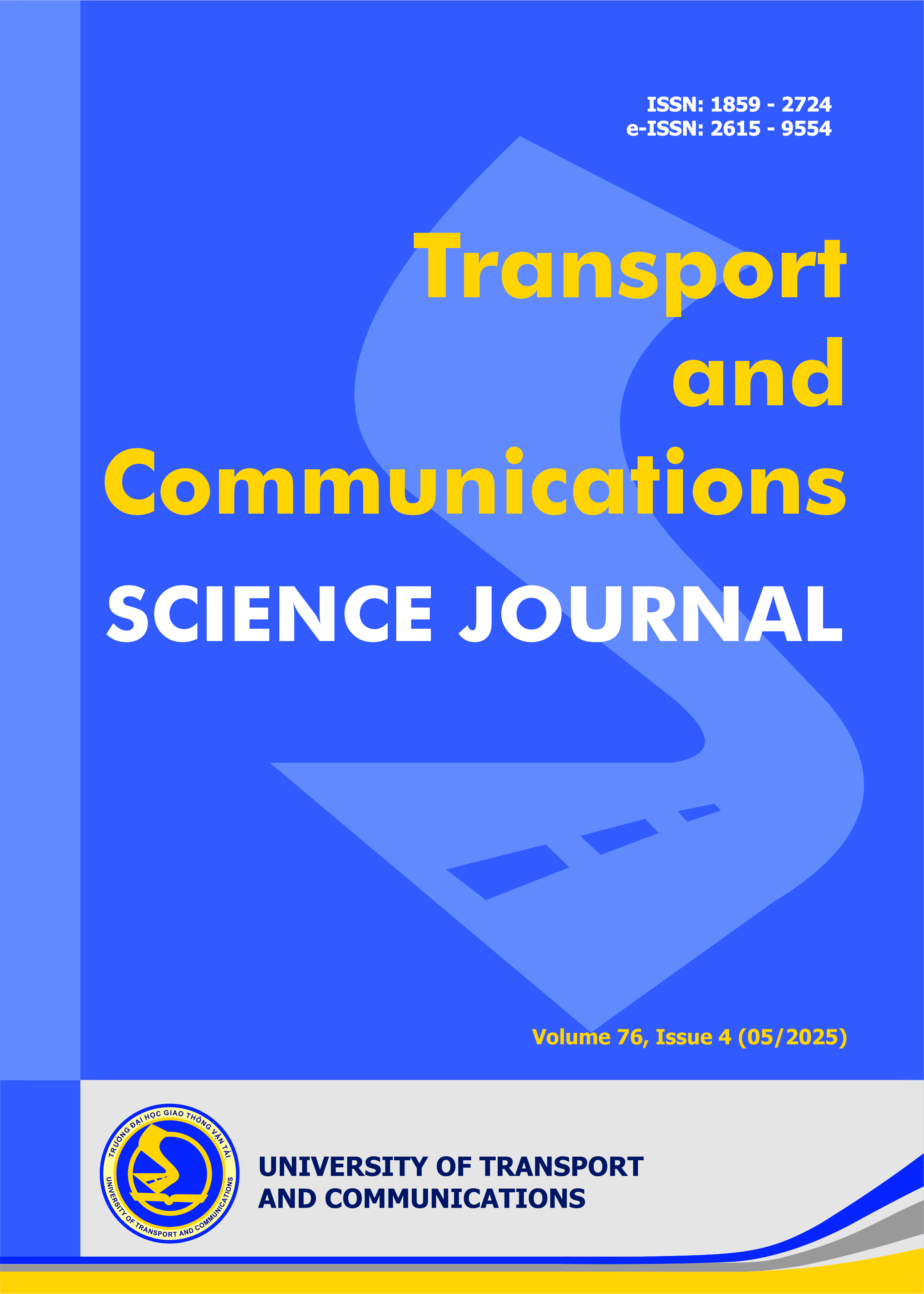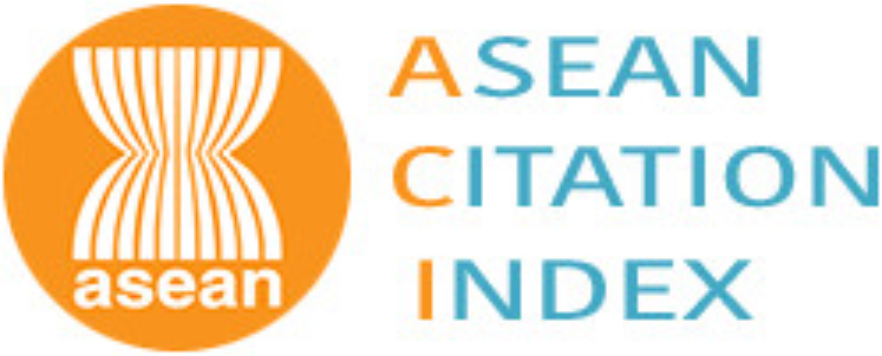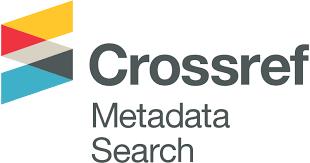Capacity evaluation of MIMO-OFDM high-speed railway communication systems
Email:
dovietha@utc.edu.vn
Từ khóa:
Dung lượng kênh, HSR, MIMO, OFDM
Tóm tắt
In recent years, wireless communications have been harnessed to enhance the performance, reliability, and passenger experience of high-speed railways (HSR). However, the demanding requirements of HSR systems, including high data rates, reliability, and low latency, present significant challenges for wireless communication technologies. One promising and effective approach to address these challenges is to increase system capacity through the use of multiple-input multiple-output (MIMO) techniques. Our study investigates radio wave propagation in high-speed railway environments using MRS (Mobile Relay Station). Through simulations based on a non-stationary geometry-based stochastic channel model, we evaluate the performance of MIMO techniques. Our findings reveal that while MIMO can significantly enhance system capacity, its practical gains in HSR environments are lower than predicted by theoretical models, primarily due to the significant deviations from ideal channel conditions. By analyzing numerical results on the effectiveness of MIMO configurations in enhancing system capacity, the paper determines the optimal number of transceiver antennas required to achieve the desired capacity increase without compromising design complexity. The evaluation methodology presented in this paper can serve as a valuable tool for predicting the performance of HSR communication systems before investing in costly hardware implementationsTài liệu tham khảo
[1]. V. D. Nguyen, D. V. Ha, V. V. Duong, H. A. Le, T. H. Nguyen, Joint fast time domain channel estimation with ICI cancellation for LTE-R systems, Phys. Commun., 47 (2021) 101–349. https://doi.org/10.1016/j.phycom.2021.101349
[2]. Official information about the progress of the North-South high-speed railway. https://laodong.vn/giao-thong/thong-tin-chinh-thuc-ve-tien-do-duong-sat-cao-toc-bac-nam-1402050.ldo/, (Accessed: 01 Oct. 2024)
[3]. J. Farooq, J. Soler, Radio Communication for Communications-Based Train Control (CBTC): A Tutorial and Survey, IEEE Commun. Surv. Tutor., 19 (2017) 1377–1402. https://doi.org/10.1109/COMST.2017.2661384
[4]. Q. Dong, K. Hayashi, M. Kaneko, An Optimized Link Layer Design for Communication-Based Train Control Systems Using WLAN, IEEE Access, 6 (2018) 6865–6877. https://doi.org/10.1109/ACCESS.2017.2763173
[5]. P. Li et al., RIS-Assisted Scheduling for High-Speed Railway Secure Communications, IEEE Trans. Veh. Technol., 72 (2023) 3488–3501. https://doi.org/10.1109/TVT.2022.3218285
[6]. S. Xu, G. Zhu, B. Ai, Z. Zhong, A survey on high-speed railway communications: A radio resource management perspective, Comput. Commun., 86 (2016) 12–28. https://doi.org/10.1016/j.comcom.2016.04.003
[7]. Q. Li, J.-C. Sibel, M. Berbineau, I. Dayoub, F. Gallée, H. Bonneville, Physical Layer Enhancement for Next-Generation Railway Communication Systems, IEEE Access, 10 (2022) 83152–83175. https://doi.org/10.1109/ACCESS.2022.3192971
[8]. I. Zakia, Capacity of HAP-MIMO channels for high-speed train communications, 2017 3rd International Conference on Wireless and Telematics (ICWT), Palembang, Indonesia, (2017) 26–30. https://doi.org/10.1109/ICWT.2017.8284132
[9]. J. Guerreiro, R. Dinis, L. Campos, On the Achievable Capacity of MIMO-OFDM Systems in the CathLab Environment, Sensors, 20 (2020) 938. https://doi.org/10.3390/s20030938
[10]. Z. Liu, M. Yang, J. Cui, Y. Xiao, X. Zhang, Performance and Capacity Optimization for High Speed Railway Communications Using UAV-IRS Assisted Massive MIMO System, Electronics, 12 (2023) 2547. https://doi.org/10.3390/electronics12112547
[11]. J. Zheng, J. Zhang, E. Björnson, Z. Li, B. Ai, Cell-Free Massive MIMO-OFDM for High-Speed Train Communications, IEEE J. Sel. Areas Commun., 40 (2022) 2823–2839. https://doi.org/10.1109/JSAC.2022.3196088
[12]. J. Zhao, R. Jiang, Y. Xu, Low Complexity Beam Selection Scheme for High Speed Railway Communications, 2020 International Conference on Computing, Networking and Communications (ICNC), Big Island, HI, USA, (2020) 124–128. https://doi.org/10.1109/ICNC47757.2020.9049483
[13]. Y. Fu, C.-X. Wang, A. Ghazal, el-H. M. Aggoune, M. M. Alwakeel, Performance Investigation of Spatial Modulation Systems Under Non-Stationary Wideband High-Speed Train Channel Models, IEEE Trans. Wirel. Commun., 15 (2016) 6163–6174. https://doi.org/10.1109/TWC.2016.2580506
[14]. T. Zhou, C. Tao, L. Liu, J. Qiu, R. Sun, High-speed railway channel measurements and characterizations: a review, J. Mod. Transp., 20 (2012) 199–205. https://doi.org/10.1007/BF03325799
[15]. F. Kaltenberger et al., Broadband wireless channel measurements for high speed trains, 2015 IEEE International Conference on Communications (ICC), London, UK, (2015) 2620–2625. https://doi.org/10.1109/ICC.2015.7248720
[16]. A. Ghazal, C.-X. Wang, B. Ai, D. Yuan, H. Haas, A Nonstationary Wideband MIMO Channel Model for High-Mobility Intelligent Transportation Systems, IEEE Trans. Intell. Transp. Syst., 16 (2015) 885–897. https://doi.org/10.1109/TITS.2014.2345956
[17]. Y. Bi, J. Zhang, Q. Zhu, W. Zhang, L. Tian, P. Zhang, A Novel Non-Stationary High-Speed Train (HST) Channel Modeling and Simulation Method, IEEE Trans. Veh. Technol., 68 (2019) 82–92. https://doi.org/10.1109/TVT.2018.2882648
[18]. T. Zhou, Y. Yang, L. Liu, C. Tao, Y. Liang, A Dynamic 3-D Wideband GBSM for Cooperative Massive MIMO Channels in Intelligent High-Speed Railway Communication Systems, IEEE Trans. Wirel. Commun., 20 (2021) 2237–2250. https://doi.org/10.1109/TWC.2020.3040392
[19]. L. Liu et al., Position-Based Modeling for Wireless Channel on High-Speed Railway under a Viaduct at 2.35 GHz, IEEE J. Sel. Areas Commun., 30 (2012) 834–845. https://doi.org/10.1109/JSAC.2012.120516
[20]. Y. Fu, C.-X. Wang, A. Ghazal, el-H. M. Aggoune, M. M. Alwakeel, Performance Investigation of Spatial Modulation Systems Under Non-Stationary Wideband High-Speed Train Channel Models, IEEE Trans. Wirel. Commun., 15 (2016) 6163–6174. https://doi.org/10.1109/TWC.2016.2580506
[2]. Official information about the progress of the North-South high-speed railway. https://laodong.vn/giao-thong/thong-tin-chinh-thuc-ve-tien-do-duong-sat-cao-toc-bac-nam-1402050.ldo/, (Accessed: 01 Oct. 2024)
[3]. J. Farooq, J. Soler, Radio Communication for Communications-Based Train Control (CBTC): A Tutorial and Survey, IEEE Commun. Surv. Tutor., 19 (2017) 1377–1402. https://doi.org/10.1109/COMST.2017.2661384
[4]. Q. Dong, K. Hayashi, M. Kaneko, An Optimized Link Layer Design for Communication-Based Train Control Systems Using WLAN, IEEE Access, 6 (2018) 6865–6877. https://doi.org/10.1109/ACCESS.2017.2763173
[5]. P. Li et al., RIS-Assisted Scheduling for High-Speed Railway Secure Communications, IEEE Trans. Veh. Technol., 72 (2023) 3488–3501. https://doi.org/10.1109/TVT.2022.3218285
[6]. S. Xu, G. Zhu, B. Ai, Z. Zhong, A survey on high-speed railway communications: A radio resource management perspective, Comput. Commun., 86 (2016) 12–28. https://doi.org/10.1016/j.comcom.2016.04.003
[7]. Q. Li, J.-C. Sibel, M. Berbineau, I. Dayoub, F. Gallée, H. Bonneville, Physical Layer Enhancement for Next-Generation Railway Communication Systems, IEEE Access, 10 (2022) 83152–83175. https://doi.org/10.1109/ACCESS.2022.3192971
[8]. I. Zakia, Capacity of HAP-MIMO channels for high-speed train communications, 2017 3rd International Conference on Wireless and Telematics (ICWT), Palembang, Indonesia, (2017) 26–30. https://doi.org/10.1109/ICWT.2017.8284132
[9]. J. Guerreiro, R. Dinis, L. Campos, On the Achievable Capacity of MIMO-OFDM Systems in the CathLab Environment, Sensors, 20 (2020) 938. https://doi.org/10.3390/s20030938
[10]. Z. Liu, M. Yang, J. Cui, Y. Xiao, X. Zhang, Performance and Capacity Optimization for High Speed Railway Communications Using UAV-IRS Assisted Massive MIMO System, Electronics, 12 (2023) 2547. https://doi.org/10.3390/electronics12112547
[11]. J. Zheng, J. Zhang, E. Björnson, Z. Li, B. Ai, Cell-Free Massive MIMO-OFDM for High-Speed Train Communications, IEEE J. Sel. Areas Commun., 40 (2022) 2823–2839. https://doi.org/10.1109/JSAC.2022.3196088
[12]. J. Zhao, R. Jiang, Y. Xu, Low Complexity Beam Selection Scheme for High Speed Railway Communications, 2020 International Conference on Computing, Networking and Communications (ICNC), Big Island, HI, USA, (2020) 124–128. https://doi.org/10.1109/ICNC47757.2020.9049483
[13]. Y. Fu, C.-X. Wang, A. Ghazal, el-H. M. Aggoune, M. M. Alwakeel, Performance Investigation of Spatial Modulation Systems Under Non-Stationary Wideband High-Speed Train Channel Models, IEEE Trans. Wirel. Commun., 15 (2016) 6163–6174. https://doi.org/10.1109/TWC.2016.2580506
[14]. T. Zhou, C. Tao, L. Liu, J. Qiu, R. Sun, High-speed railway channel measurements and characterizations: a review, J. Mod. Transp., 20 (2012) 199–205. https://doi.org/10.1007/BF03325799
[15]. F. Kaltenberger et al., Broadband wireless channel measurements for high speed trains, 2015 IEEE International Conference on Communications (ICC), London, UK, (2015) 2620–2625. https://doi.org/10.1109/ICC.2015.7248720
[16]. A. Ghazal, C.-X. Wang, B. Ai, D. Yuan, H. Haas, A Nonstationary Wideband MIMO Channel Model for High-Mobility Intelligent Transportation Systems, IEEE Trans. Intell. Transp. Syst., 16 (2015) 885–897. https://doi.org/10.1109/TITS.2014.2345956
[17]. Y. Bi, J. Zhang, Q. Zhu, W. Zhang, L. Tian, P. Zhang, A Novel Non-Stationary High-Speed Train (HST) Channel Modeling and Simulation Method, IEEE Trans. Veh. Technol., 68 (2019) 82–92. https://doi.org/10.1109/TVT.2018.2882648
[18]. T. Zhou, Y. Yang, L. Liu, C. Tao, Y. Liang, A Dynamic 3-D Wideband GBSM for Cooperative Massive MIMO Channels in Intelligent High-Speed Railway Communication Systems, IEEE Trans. Wirel. Commun., 20 (2021) 2237–2250. https://doi.org/10.1109/TWC.2020.3040392
[19]. L. Liu et al., Position-Based Modeling for Wireless Channel on High-Speed Railway under a Viaduct at 2.35 GHz, IEEE J. Sel. Areas Commun., 30 (2012) 834–845. https://doi.org/10.1109/JSAC.2012.120516
[20]. Y. Fu, C.-X. Wang, A. Ghazal, el-H. M. Aggoune, M. M. Alwakeel, Performance Investigation of Spatial Modulation Systems Under Non-Stationary Wideband High-Speed Train Channel Models, IEEE Trans. Wirel. Commun., 15 (2016) 6163–6174. https://doi.org/10.1109/TWC.2016.2580506
Tải xuống
Chưa có dữ liệu thống kê

Nhận bài
15/10/2024
Nhận bài sửa
14/01/2025
Chấp nhận đăng
10/05/2025
Xuất bản
15/05/2025
Chuyên mục
Công trình khoa học
Kiểu trích dẫn
Do Viet, H. (1747242000). Capacity evaluation of MIMO-OFDM high-speed railway communication systems. Tạp Chí Khoa Học Giao Thông Vận Tải, 76(4), 638-649. https://doi.org/10.47869/tcsj.76.4.15
Số lần xem tóm tắt
108
Số lần xem bài báo
75









